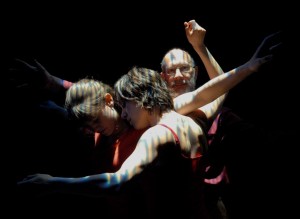Art and science have more in common than we usually imagine. Both involve creativity, experiments, research, rigorous hypothesis testing and imagination. Yet, science most often dwells in the mind, while art is considered the realm for emotions. Both can benefit from interacting, feeding off of each other to stimulate the deepest understandings of the world around us.
I have enjoyed the opportunity to collaborate with artists, and benefited from the insights art brings to science as well as the communicative possibilities of using the arts as a medium to discuss how science is done and the broader societal issues that science reveals.
Available for:
Talks
The Artistry of Bees: There is much to learn about honeybees, and ourselves, through art that takes bees as subject and topic. Best described as inspiration, it’s expressed in the way that the magical, mystical essence of the hive inspires our creativity and wonder. The most powerful translators of the marvels presented by bees may be artists, who provide distinctive insights through various media. Because we routinely conduct business with bees, we often overlook the profound lessons they provide in spheres beyond data and commerce. Bees yield insights into the spiritual, religious, and philosophical realms for those who pause to view their message through art.
Projects
I’m interested in participating in selected projects in collaboration with artists, particularly focused on ecological art, stretching the boundaries of how we communicate science and the co-linked ideas of experimentation and creativity. All mediums of artistic expression are welcome.
Examples/Awards (Art/Science)
Honey, Hives and Poetry
I’m collaborating with award-winning poet Renée Sarojini Saklikar in a project connecting poets with beekeepers, chefs, urban farmers, food bank workers and others to celebrate and explore the boundaries of language and bees. The project inhabits the intersection of the global movement to grow healthy food in cities, a growing awareness of threats to honeybee and wild bee pollinators and the vibrant poetry scene in Vancouver. Poetry is the ideal voice through which to capture our memories and reflections about food, going beyond sustenance to connect the personalities who harvest and the land from which they gather.
Saklikar writes thecanadaproject (https://thecanadaproject.wordpress.com), a life-long poem chronicle that includes poetry, fiction, and essays. Her book, Children of Air India, un/authorized exhibits and interjections, was the winner of the 2014 Canadian Authors Literary Award for poetry and a finalist for the 2014 Dorothy Livesay Poetry Award.
Conduit
Conduit (Conversations on Nature: Dialogue Uncovers Ideas Together) is a new collaboration between the Art is Land Network (a collective of Vancouver artists) and the Roundhouse Community Arts and Recreation Centre, the Dr. Sun Yat Sen Chinese Classical Garden, and others, including myself. It will be a public conversation involving 12 months of art installations about nature in the city, utilizing the overlapping mediums of art and dialogue. The project began early in 2014.
Dance/Ecology project
The Dance/Ecology project is a series of dialogues, workshops, and public performances exploring art, science and creativity, including how dance might communicate concepts from science. The first collaboration between the Link Dance Foundation and the Centre for Dialogue, Symbiotic, was performed at the Kay Meek Theatre in West Vancouver and the Luminato Festival (Harbourfront) in Toronto in 2008. Experiments: where logic and emotion collide was performed at Vancouver’s Scotiabank Dance Centre in November 2010, in Toronto at the Winchester Theatre in 2012 (as part of the Subtle Technologies Festival), and at the 2012 Guelph Dance Festival. Workshops, panel discussions and other public events accompanied each performance.
http://www.vancouverobserver.com/blogs/methodscreation/2009/02/06/abandoning-abandon-dancing-science
Aganetha Dyck/Beetalker
Aganetha Dyck (http://www.aganethadyck.ca) is an iconic Canadian artist whose work involves collaborating with bees by inserting second-hand or slightly damaged items into colonies and letting the bees construct comb. She and I collaborated on projects in which honeybee pheromones were used to guide the bees’ “artistic” expression. We also participated in a one-hour television documentary, “Beetalker,” about our work together.
These projects released the voices of bees to speak with us at the junction of the tangible and the spiritual, creating a path between the practical perspectives that characterize those who study and keep bees and the empyreal sphere inhabited by the bees themselves. Their self-produced imagery yields unique, complex statements that link the labor of the bees to our human sensibilities.
http://www.cbclearning.ca/sciences/environmental-science/beetalker-the-secret-world-of-bees.html
Poetry
The Science of poetry, The Poetry of science. Poets and scientists working together to open up new ways of seeing experiencing and interpreting the world around us that is beneficial to both fields. In this fusion of worlds (science and poetry), poets visited labs where the tools and methods were scalpels and mice or cells and pond scum, and scientists explored articulating their work through the language of poetry. This unique collaboration reached fruition in a chat book and at a sold-out public reading that turned out to be a reunion of the heart. (Vancouver, fall 2012, http://www.sfu.ca/pamr/media-releases/2012/poets-and-scientists-fuse-creative-horns.html).
Testimonials (Art and Science)
“The inspiring and moving combination of art and science—spectacular!”
“Interactive and very interesting”
“Perfect symmetry. Three excellent collaborative speakers in sync—much like busy bees with good work to do.”
